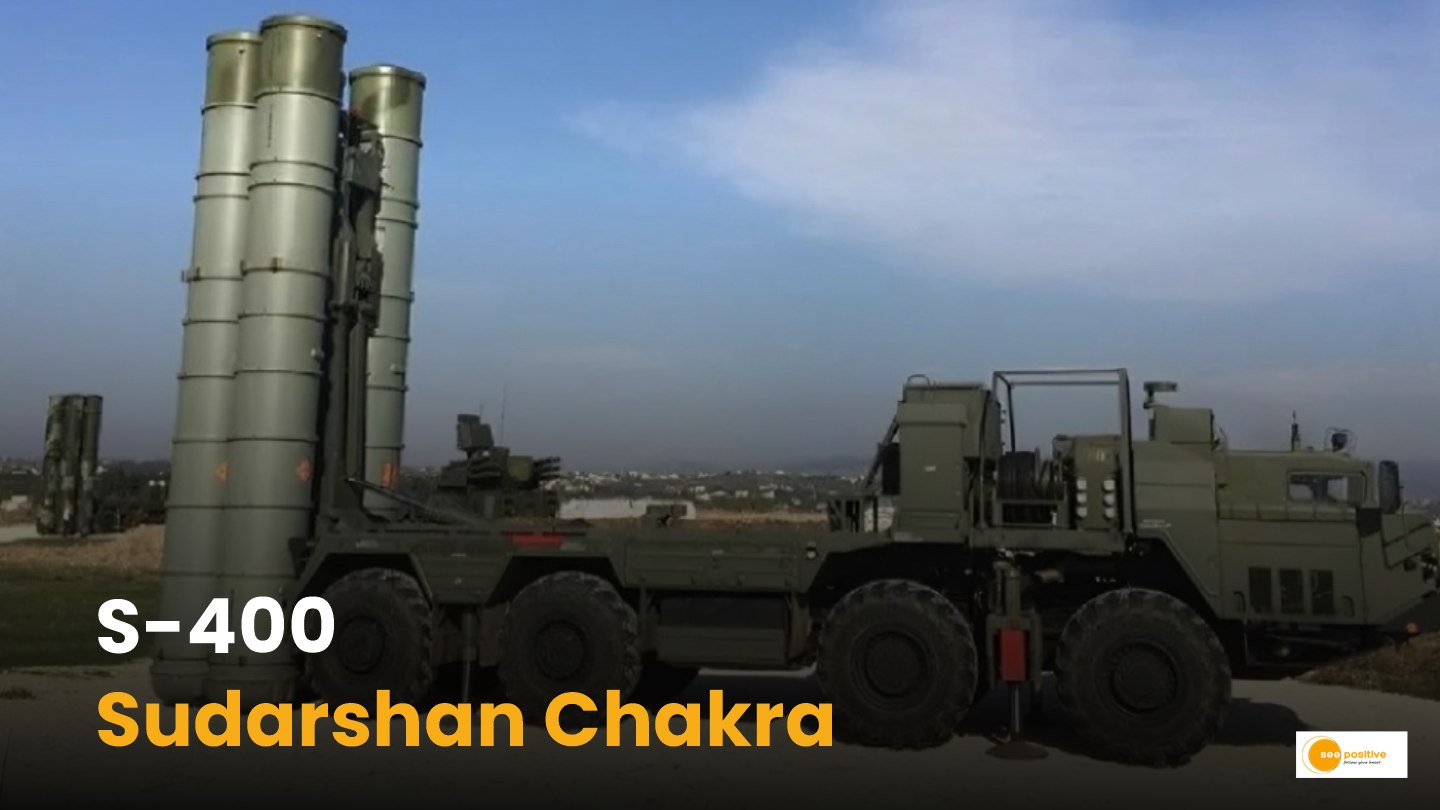S-400 Sudarshan Chakra: “Sudarshan Chakra,” drawing inspiration from the mythological weapon of Lord Vishnu known for its speed and precision. This cutting-edge system marks a major advancement in India’s aerial defense preparedness and is set to transform the country’s strategic approach to countering airborne threats.
From Myth to Military Power
Named after the divine discus wielded by Lord Vishnu, the Sudarshan Chakra carries the legacy of precision and speed into the 21st century. Just as the mythological weapon returned to its master after striking its target, this modern avatar is designed to neutralize aerial threats with pinpoint accuracy—then remain on guard, ready for the next strike.
How it Shields the Nation
This long-range surface-to-air missile system is no ordinary defense setup. Capable of detecting targets as far as 600 km away and engaging them at ranges up to 400 km, the S-400 system is a multi-layered fortress in motion. From fighter jets and drones to ballistic and cruise missiles, it can track and eliminate a wide array of threats—simultaneously.
Each unit includes:
- One of the deadliest surface-to-air missiles
- World’s most advanced long-range air defence systems
- The S-400 has 3 components – Missile launchers, a powerful radar and a command centre
- It can hit aircraft, cruise missiles and even fast-moving intermediate range ballistic missiles
- Powerful radar systems that scan the skies relentlessly
- A command center that acts as the brain of the operation
- Mobile launchers capable of rapid deployment across terrain
- A variety of missiles tailored for different engagement ranges and altitudes
It’s a digital warrior, armed with intelligence and firepower.
Strategic Anchoring Across India
Since signing the $5.4 billion deal with Russia in 2018, India has steadily integrated this shield into its national defense fabric. The S-400s—rechristened Sudarshan Chakras—have been deployed in sensitive regions:
- The Siliguri Corridor, guarding the narrow gateway to India’s Northeast
- Punjab and Jammu, offering a net of protection in the volatile northern front
- Rajasthan and Gujarat, watching over western skies with unblinking vigilance
These deployments are not just about protection—they’re a projection of power, designed to keep adversaries guessing and deter threats before they even arise.
Battle-Tested and Proven
The Sudarshan Chakra wasn’t just meant for ceremonial parades. During Operation Sindoor recently, amid rising tensions with Pakistan, the system sprang into action. In a high-stakes environment where seconds matter, it reportedly intercepted over 80% of incoming drones and missiles—safeguarding cities and infrastructure with almost mythic efficiency.
Later, in simulated exercises, Indian Air Force jets played the role of intruders. The Sudarshan Chakra tracked, targeted, and “destroyed” them in mock battles, reinforcing its status as one of the most advanced defense systems on Earth.
Looking to the Future
With the final squadrons of the Sudarshan Chakra expected to be fully operational by 2026, India will possess one of the most formidable air defense systems in the world. It represents not just a technological upgrade, but a philosophical shift—from being vulnerable to becoming virtually impenetrable.
As the Sudarshan Chakra continues its silent vigil, scanning the skies for danger, it embodies the spirit of a nation that honors its past while preparing relentlessly for the future.


